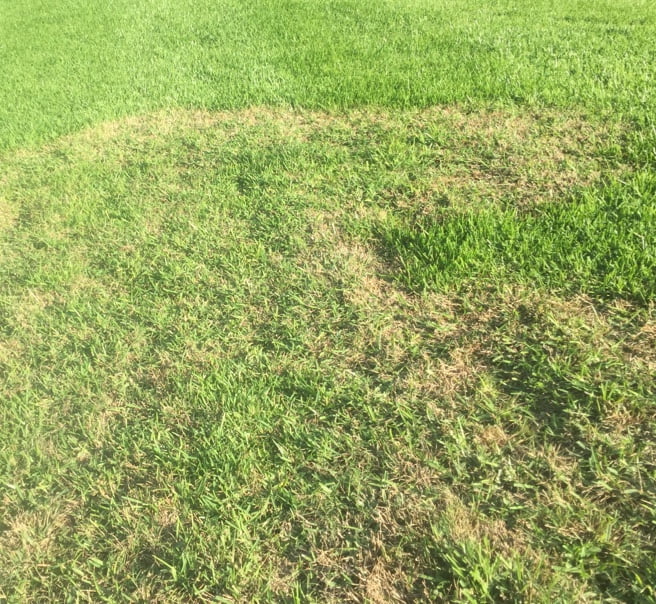Prevent Large Patch in Lawns
Late fall is the time to effectively control large patch to prevent widespread damage through the winter and next spring.
Previously, large patch was only thought to affect zoysia (once called zoysia patch), but we now know it affects all warm-season turfgrasses including seashore paspalum and bermudagras.
Favorable conditions
Optimal conditions for large patch development include cool-to-mild temperatures (50 degrees F to 86 degrees F) coupled with high soil moisture and extended periods of overcast weather. Though, like all pathogens, some activity may still occur outside of this range of environmental conditions.
Cultural management
Aeration: Improved soil drainage and regular summer aeration are effective in reducing large patch.
Nitrogen: Recent research (Miller et al., 2016) showed 0.75 pound of nitrogen (N) per 1,000 square feet applied in fall or spring to zoysiagrass did not increase large patch, in contrast to older information. Instead, positive turfgrass responses from N were found to occur on Meyer zoysiagrass in spring, and the net result was a reduction of large patch symptoms.
Control with fungicides
DMI fungicides: The preferred mode of action for soilborne pathogens like this.
Apply in a minimum of 2 gallons per 1,000: Recent research at University of Tennessee indicates fungicides only need to penetrate as far as the leaf sheath to be most effective, so apply in high water carrier volumes or apply ONLY 0.1 inch or less irrigation after application when using a lower water carrier volume.

